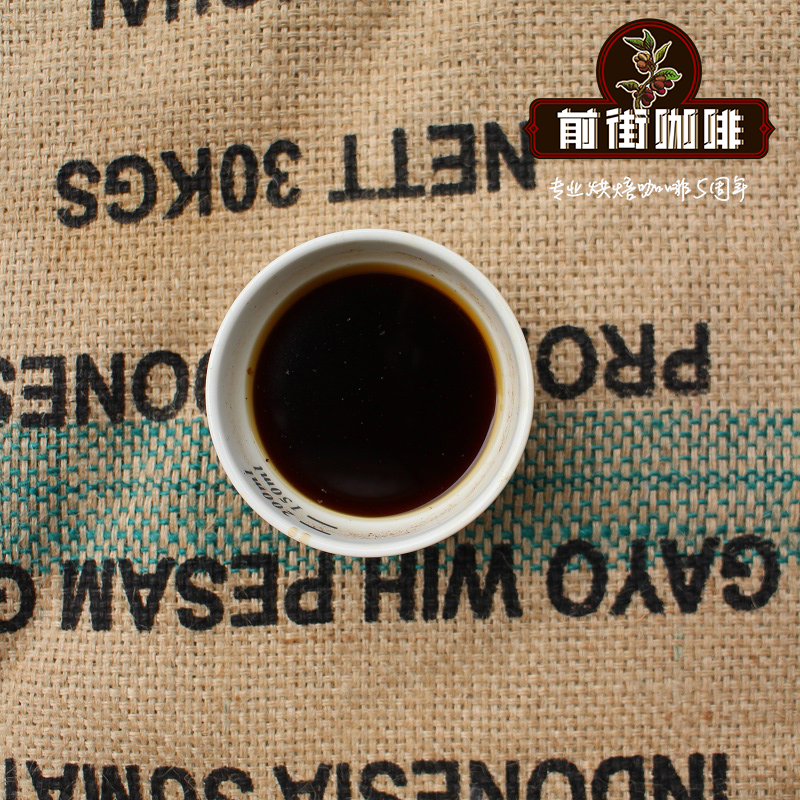Huatusco Huatusco, a coffee producing area in Mexico, introduces which estates of Mexican coffee are produced.

Professional coffee knowledge exchange more coffee bean information please follow the coffee workshop (Wechat official account cafe_style)
Among the major coffee producing countries in Central America, the coffee tastes comfortable and fragrant. The Mexican coffees selected are Coatepec, Huatusco and Orizaba, among which Cottpe is considered to be one of the best in the world. The coffee cultivation belt of Mexico is similar to Guatemala in the south in terms of geography and climate, so it is included in the scope of "China and the United States". The main producing areas are distributed in Goa DiBuick, Oaxaca and other states, especially the water-washed coffee beans from the highlands, which have excellent aroma and sour taste, and the specifications are mainly divided into different grades according to the elevation. Coffee beans are large, sour and sweet, strong and fragrant, suitable for moderate to deep baking, and most of them are sold to Europe and the United States after harvest. Characteristics: all acidic, fragrant and smooth, mellow, sour and sweet, strong and fragrant. Special fruit aromas.
A brief history of the development of Mexican coffee]
Coffee in Mexico was first grown in the late 18th century, when a Spaniard was introduced from the West Indies and planted in southern Mexico in 1790. Then coffee was planted in the Mexican state of Vera Cruz in the early 19th century and slowly expanded. Then coffee production was introduced to Oaxaca and Chiapas in the south, and today there are 12 major states in Mexico that produce coffee. In the 1996-1997 season, Mexico produced 6652173 metric tons of coffee beans equivalent to 5100000 bags (60 kilograms per bag), making it the fourth largest coffee producer in the world at the time.
[grading of Mexican coffee]
Estricta Altura (Spanish) / Strictly High Mountain Grown (English): planted above 4200 feet above sea level
Altura/High Mountain Grown: planted above 3300 feet above sea level
Prima Lavado/Prime Washed: planted above 2700 feet above sea level
[coffee producing area]
At present, there are 12 states in Mexico that produce coffee: (1) Chiapas (2) Oaxaca (3) Vera Cruz (4) Puebla (5) Guerrero (6) Hidalgo (7) San Luis Potosi (8) Nayarit (9) Jalisco (10) Colima (11) Tabasco (12) Queretaro
Give a brief account of the more important Vera Cruz,Oaxaca,Chiapas:
Vera Cruz State: the earliest coffee producing area, producing many low-altitude common beans. The high-quality coffee in Vera Cruz includes beans from Orizaba, Huatusco, Coatepe and other highlands.
Oaxaca State: produces some good quality coffee, of which Pluma is the best. The Pluma area is located on the hillside of the Pacific coast, and coffee was introduced in the 1860s.
Chiapas State: located in the southernmost part of Mexico, near the Guatemalan border. The Pacific-facing hillside of Sierra Madre, in the Soconusco district of Chiapas, is 2000 to 4000 feet high and grows high-quality, mild coffee. Beans from this area are collected and distributed in Tapachula, the capital of the Soconusco district. Tapachula is located at 600ft above sea level and has a small Pacific harbor, San Benito, 24 miles above sea level.
Beans in this area are exported from this port.
And here is a description of the coffee in Chiapas:
[geography and climate of Chiapas]
Area: 73724 square kilometers
Climate: mostly tropical (tropical), humid and semi-humid. It gets the most rain in the hottest month.
Geography: most of the mountains in Chiapas are volcanoes, of which the Chichonal volcano in the north of Chiapas recently erupted in 1982. The state is also rich in water resources, with two of Mexico's largest rivers, Grijalva and Usumacinta, flowing through Chiapas from Guatemala. So during the summer rainy season, a large number of Rain Water flows through these rivers and lakes into the lowlands.
[coffee growing areas] (90% in highlands, 10% in low areas)
Plateau: Motozintla, Tapachula, Jaltenango, Bochil, San Cristobal de las Casas, Pichucalco, Yajalon
Low areas: Copaninala, Comitan, Ocozocoautla, Palenque, Ocosingo
[coffee planting]
1. Arabica is the main species.
two。 The varieties of Arabica planted in plateau area are: Typica, Maragogype, Boubon, Mundo Novo.
The lowlands are: Caturra, Catuai, Catimor.
3. The elevations of coffee grown in Chiapas can be divided into Prime Washed, Extra Prime Washed, High Grown and Strictly High Grown. Coffee is grown at different elevations.
[handling of coffee]
Due to sufficient water resources, the coffee cherries picked are washed and then sunburned in farmers' courtyards. Some high-altitude producing areas are still picked and sent by aborigines or transported by animals to treatment plants or associated cooperatives, and then shelled and graded. On the other hand, watersheds with large rivers are shipped to dry treatment plants (dry miller) for later treatment.
[the rise of organic cultivation]
Chiapas is the poorest state in Mexico, and years of tense confrontation between government forces and guerrillas have led to extreme hardship among indigenous people, while the traditional mode of coffee production (using chemical fertilizers and insecticides). ∼ does great harm to the environment, but the income is not enough to make ends meet. Fortunately, Fairtrade (Fair Trade Organization) and some organic coffee environmental protection organizations have made great efforts to help these aboriginal producers' cooperatives to upgrade their concept and technology, so that Chiapas's high-grade organic beans can be maintained and planted better!
In terms of taste, the plateau organic beans of Chiapas have obvious sweetness, body is thick, less sour, and quite suitable for Chinese tastes, which is very different from the famous producing areas of Central American countries, such as Antigua, Guatemala and Tara beads of Costa Rica, whose fruits are obviously more sour.
Related recommendation: is hand-made coffee really good? Why does coffee smell better than it tastes?
Important Notice :
前街咖啡 FrontStreet Coffee has moved to new addredd:
FrontStreet Coffee Address: 315,Donghua East Road,GuangZhou
Tel:020 38364473
- Prev

Mexican Coffee Finra Manor introduces Mexican coffee beans are Arabica beans
For more information on coffee beans, please follow the coffee workshop (Wechat official account cafe_style), which has a long history of 128 years since it was founded in 1885. The fifth generation of ancient Italian families emigrated to Mexico at an altitude of 1000-1200. Alpine coffee generation inheritance, ancient technology, excellent soil environment plus special geographical location of the year-round clouds.
- Next

Mexican coffee producing area Nayarit coffee is what Mexican coffee producing area push
Professional coffee knowledge exchange More coffee bean information Please pay attention to coffee workshop (Weixin Official Accounts cafe_style) Mexico honey sweet, walnut, almond sugar aroma, banana, cocoa, nuts, aftertaste mild taste light and smooth. Located in North America, climate diversity, the world's 14th largest country, is also the fourth largest coffee producer, annual coffee production of about 5 million bags
Related
- Does Rose Summer choose Blue, Green or Red? Detailed explanation of Rose Summer Coffee plots and Classification in Panamanian Jade Manor
- What is the difference between the origin, producing area, processing plant, cooperative and manor of coffee beans?
- How fine does the espresso powder fit? how to grind the espresso?
- Sca coffee roasting degree color card coffee roasting degree 8 roasting color values what do you mean?
- The practice of lattes: how to make lattes at home
- Introduction to Indonesian Fine Coffee beans-- Java Coffee producing area of Indonesian Arabica Coffee
- How much will the flavor of light and medium roasted rose summer be expressed? What baking level is rose summer suitable for?
- Introduction to the characteristics of washing, sun-drying or wet-planing coffee commonly used in Mantenin, Indonesia
- Price characteristics of Arabica Coffee Bean Starbucks introduction to Manning Coffee Bean Taste producing area Variety Manor
- What is the authentic Yega flavor? What are the flavor characteristics of the really excellent Yejasuffi coffee beans?

